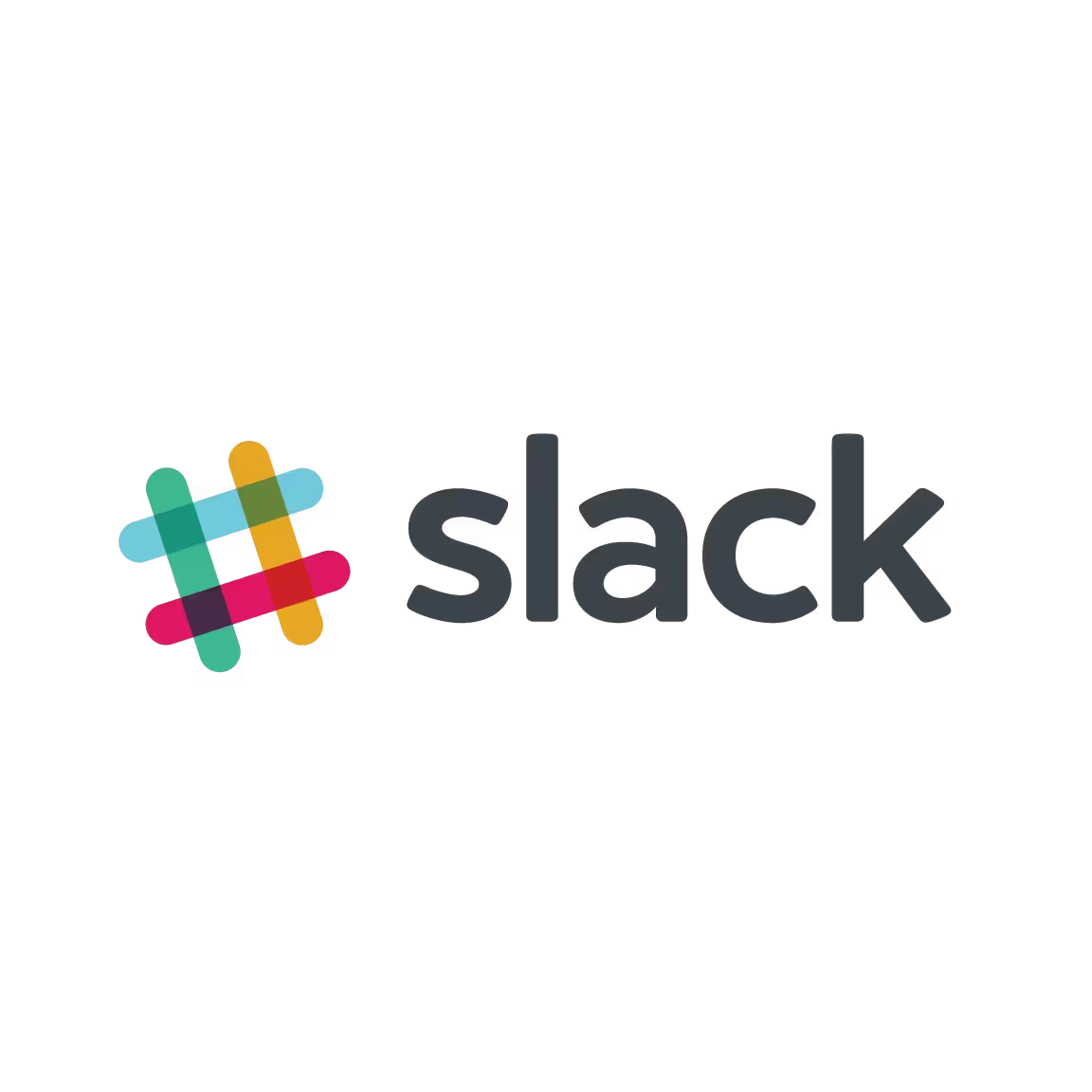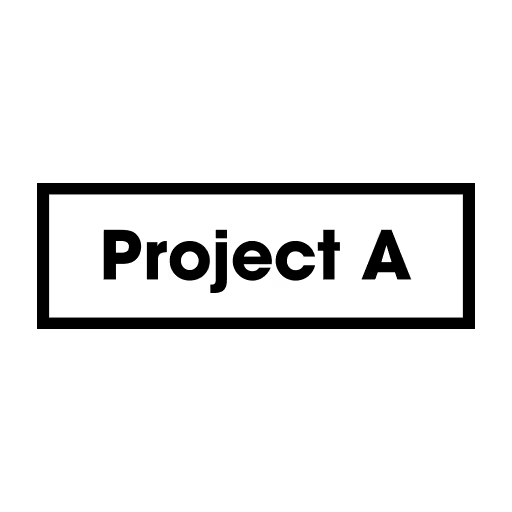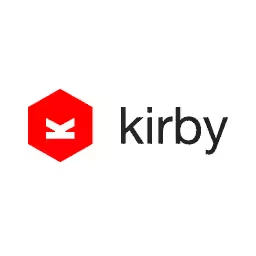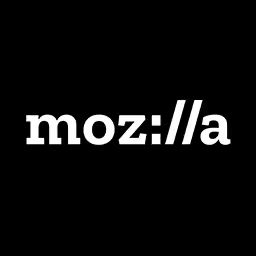Jonathan Snook
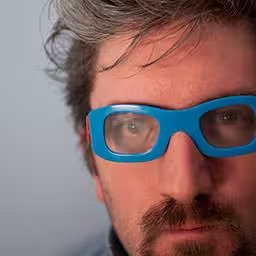
Jonathan Snook is a designer and developer from Ottawa, Canada. Snook has a 15+ year career having worked freelance, for agencies, and for product companies such as Yahoo!, Shopify, and Xero. He writes about tips, tricks, and bookmarks on his blog at Snook.ca. He has also written for A List Apart, 24ways, and .net magazine, and has co-authored two books, The Art and Science of CSS and Accelerated DOM Scripting. Snook has also authored and received world-wide acclaim for the self-published book, Scalable and Modular Architecture for CSS, sharing his experience and best practices on CSS architecture.
Talk: Success
In his talk Snook is asking (and maybe answering) the following questions:
- What does it mean to be successful?
- How does one become successful?
- What does one do to help others be successful?
- What comes after becoming successful?
Transcription
[Music]
Audience: [Applause]
Jonathan Snook: Thank you very much. Yeah, I’m not going to be talking CSS. I’m going to talk React today.
Audience: [Laughter]
Jonathan: No, that’s okay. Hello. I’m sorry. Ich bin ein binliner. I find this funny. I guess you guys are probably used to it by now.
Audience: [Laughter]
Jonathan: I watched this video a while back from a musician/comedian called Tim Minchin? If you haven’t seen his videos, I highly recommend hopping on YouTube. Maybe wait until after my talk, but definitely check them out.
A few years ago, he actually got an honorary Ph.D. from the university that he went to in Australia. He did his acceptance speech of which he had his nine life lessons. Before he got into these lessons, he was mentioning how he had gotten hired to be an inspirational speaker at this accounting software company. The other person that was there with him was this mountain climber who unfortunately had gotten stuck on a mountain and lost his legs.
I thought, “Man. Climbing a mountain. I’ve climbed a mountain, so maybe I can talk about these things.” About a month and a half ago, I climbed Mount Kilimanjaro, which, if you look at my girth, might seem surprising. I was out of breath climbing the stairs.
Audience: [Laughter]
Jonathan: No, I’ve got photographic proof that I climbed a mountain.
Audience: [Laughter]
Jonathan: Thank you.
Audience: [Laughter]
Jonathan: Yep. Here’s me on top of that mountain. No, that's actually me. I did actually climb a mountain. As you can see, 5,895 meters, good old 19,000 feet, every one of them painful. It was an interesting process.
For those of you who haven’t looked at that, a lot of people say, “Anybody can climb Mount Kilimanjaro. It’s relatively easy,” and I didn’t actually do any research before I decided to do this, which probably would have been a smart idea. In fact, the route that I went, nicknamed the Coca-Cola Route, which is apt because I drink a lot of Coke, is the easier route, but its success rate is actually only about 60%. The reason for this because a lot of people are actually unprepared for how difficult of a climb it is. It takes about four days to climb up and about two days to climb down.
Again, most people would probably prepare ahead of time. They would train. They’d maybe climb some smaller mountains, maybe some hills. Where I live, it’s actually very flat, so there wasn’t a lot of training. I definitely was heavily ill-prepared for this climb. But, when I got there, I’m like, “Screw it. I’m not going to back out now. I might as well try.”
Most people are like, “If I don’t make it to the peak, I’m a failure.” I just kind of thought, “You know, I’m just going to make it as far as I can,” and the first day wasn’t too bad. The grade is about 10%, relatively straightforward. It took about five hours to climb a kilometer in altitude. It’s an eight-kilometer walk.
At the end of the first day, I thought, “Well, that was a little difficult, but not too bad.” Then the second day was a slightly longer hike of about 12 kilometers. Yeah, and sure enough halfway in I’m like, “Oh, man, this kind of sucks; but, well, I’m not dead yet, so I might as well keep walking,” and I did. At the end of the second day I was like, “Okay, you know what? I actually feel pretty good. I think I can maybe pull this off.”
Day three is actually kind of an optional thing. Some people just continue straight up and hike all the way to the top. I chose to take an extra day. At this point, I’m at 3,700 meters at the end of the second day. I decided to stay there for an extra day, which gets me used to the altitude before I head all the way up. It turned out actually that worked out pretty well in my favor.
We did a hike on that third day up to about 4,100 meters and then back down. It was such a light little hike that I went, “I got this. This is not going to be a problem. This is going to be easy.” I probably shouldn’t have psyched myself out quite as much as I did.
Day four - day four is where hell begins. Now, the initial hike up to this particular hut, it’s called Kibo Hut, is about a nine and a half kilometer hike. It took me about five hours. I got there around 1:00, 1:30 in the afternoon. You get there. They serve you some tea, some popcorn, and they’re like, “Try to get some sleep.”
It’s the middle of the afternoon. I’ve got this schedule. I go to bed at 10:00, 11 o’clock; fall asleep; wake up at 7 o’clock. But, no, middle of the afternoon, try to get some rest, and I am in a room with 11 other Australians. They were a little loud, as they might have a reputation for being, but great people.
I didn’t really nap that much, and 5 o’clock rolls around. It’s like, okay, time for dinner. We have some dinner. An hour and a half later, okay, again, try to get some sleep because we’re going to wake up at 11 o’clock that night.
I did manage to get four and a half hours of sleep. Woke up at 11:00 at night. About midnight we start climbing.
Now, the conditions that we had been in up to that point were relatively straightforward. In fact, this very shirt was the one that I had worn up until that point. It was relatively warm. It wasn’t raining. It was sunny. It was a decent 15 degrees. I was pretty happy with this.
Midnight, at that kind of altitude, things get really cold. It was actually about minus 15, so no longer would this shirt do. I had to wear multiple layers. I had my snow pants on. I had my winter jacket on and my gloves, my hat, so dressed to the hilt like this as I begin my trek in pitch darkness. I have a little headlamp so I can see a radius of light about this big. We begin our hike up to the top.
Now, up until that point, like I said, we had about a 10% grade. It wasn’t too bad. The grade now is about 60% as we climb up the caldera of the mountain. You go really slow.
There’s sort of this saying that they have, “Pole, pole,” which just means slowly. We would take a step, take a step, for six hours in pitch darkness as we tried to make our way to the top. Every now and then I would see somebody struggling. One guy apparently passed out twice, and he decided to just head back. Another one had extreme headaches, so she went back down.
I am struggling. I am freezing cold despite how well I thought I was dressed. I was absolutely freezing, so I’m trying to make sure; I do not want to get frostbite. I would like to keep all my fingers - thank you very much. Exhaustion from trying to climb this thing.
About an hour and a half into this hike, I was like, “You know what? I’m done. It was a good walk. It’s been fun, but I think I’m okay just heading back down.” But I thought to myself, “You know what? Maybe another half an hour to go and I will have made it a third of the way up.” I kind of like round numbers. “Man, an hour and a half out of six. What is that? I can’t reduce that fraction. One-third works for me,” so I was like, “A half an hour in, I could do that.”
Sure enough, I managed to walk that half an hour. Of course, obviously I’ve got a picture at the peak, so I probably already gave away the ending, but bear with me. Yeah, after two hours, then again, like I said, I like my round numbers. I was like, “If I just make it another hour, I will be half way. Let me just make it half way.”
I spent that hour hiking in the freezing cold. There’s no light out except for the headlamps. If I looked up, I could see all the headlamps on the way up. I could look behind me. I could see the headlamps all the way down. There was no moon out that night. The wind, the rain was starting to come in, and you can see the ice building up on the rocks around us. Definitely not a very pleasant climb up.
Towards the end, after about doing this for five hours, I just kept saying, “I just want to see the sun. I want to see the light coming off the horizon. Show me something.” Sure enough, around 5:30, there was this red gleam of light off in the distance. I was so excited just to see light again. I was not a happy camper going all the way up here.
Finally, towards the end, I’m now at this point climbing up these rocks. The funny thing is, after six hours of hiking, I’m not even at the peak yet. All I get to is what’s called Gillman’s Point. It’s the edge of the crater. But sure enough, at 6 o’clock in the morning, I reach the edge of the crater, Gillman’s Point. The sun is coming up. It is absolutely glorious.
I actually brought my camera, which was probably stupid. DSLR, big huge thing that I had on me. Everybody thought I was crazy because was like a kilo worth of camera gear. Like I said, I am not a smart man.
Audience: [Laughter]
Jonathan: Sure enough, I made it to Gillman’s Point. I actually pretty much broke down crying at that point just from the sheer exhaustion that I had from that point, the sheer beauty of what I was seeing. The pictures did none of it justice.
Then I had another two hours of hiking to go. It turns out there’s another two-hour hike from there all the way up around the edge of the crater. What’s called Kibo Hut is at 4,700 meters, and Gillman’s Point is at 5,700 meters. I’ve now, over 6 hours, climbed up a kilometer, which is, I think, about four and a half kilometers worth of hiking just to get up to that point, and then another 2 hours of hiking, which he said was just a lot easier. It’s not the same grade. You just go around. But, when you’re so utterly exhausted, you kind of plow through. I just wanted to get up to the top.
There was one point I had passed somebody else who was so exhausted he couldn’t even open his eyes. His guide was holding him up. I’m just like, “Why is he still trying to make it to the peak? He is so far gone. He should probably be going down at this point.” I was just thankful I wasn’t in that kind of condition.
Sure enough, I make it up to the peak. Glorious. I made it! Thank you very much. Thank you.
Audience: [Applause]
Jonathan: Of course, the thing is, there’s always something on the other side, which is getting down.
Audience: [Laughter]
Jonathan: Again, just being so exhausted, my legs couldn’t really handle trying to make it back down. I was okay for a little while. Along the edge of the crater isn’t too bad, but then trying to go down the side, it’s actually this very loose gravel. When you take a step, it moves. You require a lot of leg strength to hold yourself up, and so I kept falling down. I kept falling down.
At one point, literally with my guide, my arms around his shoulders, us together, trying to go down this hill as fast as we can. It took me three and a half hours to get all the way back down to Kibo Hut at 4,700 meters. The problem is the way their logistics work on the mountain is you don’t stop there. I now have to make the nine and a half kilometer walk from there all the way back down to 3,700 meters. All this after having four and a half hours sleep, having spent eight hours hiking up, three and a half hours hiking down with that exhaustion.
Thankfully, at Kibo Hut, we had about an hour to just relax, regroup, and have some food. That wasn’t good, as you might imagine for any of you who have done such extreme amounts of exercise. The moment you stop moving, your legs decide to just kind of seize up and not work anymore. In fact, two of the other Australians had to get wheeled down. They got put on these big gurneys, strapped in, and then there’s like a big bike tire underneath that a bunch of people will push down to get them down to Horombo Hut, the hut at 3,700 meters.
I took some Advil. I limped my way in the beginning. Thankfully, about a half an hour in, I was able to walk relatively well all the way down to Horombo Hut. Got a good night sleep. Probably one of the better nights of sleep I had gotten that week, and that wasn’t saying much.
The last day, I now have to hike 20 kilometers all the way back down to the final gate. I did that as fast as I can. The guy was saying, “It’s like maybe six, seven hours to get down.” I’m like, “Hell no.” I got down in four and a half hours going down as fast as I could. I rolled my ankle like four times. Again, when I get tired, I start stumbling. I start making mistakes.
But, I made it all the way up to the top; I made it all the way to the bottom; and I was really happy with myself. I actually had a little journal since, surprise-surprise, there is no Internet access on the mountain. I was a little disappointed. I thought I paid for wi-fi.
Audience: [Laughter]
Jonathan: Yeah, I had a little journal. The first thing I had written in my journal after I had come down off the peak was, “Jesus fucking Christ that was the stupidest thing I ever did!”
Audience: [Laughter]
Jonathan: Beforehand, I had these dreams of, you know what, after Kilimanjaro, I’ll do, like, Aconcagua in South America. Now I am really happy with my couch at home. It is the best!
Audience: [Laughter]
Jonathan: Oh, yeah. With that story aside, let’s talk about what is success. I’m going to have a little theory. My theory is that you are here because you want to be successful. You are passionate about the stuff that you do, and you are here to learn from these great speakers that have been here for the last two days, or three days for those of you who did the workshop, to learn from their experience and their expertise so that you can go back to the work that you’re doing, whether or not you’re working in an agency, freelance, or working for a big corporation. You too want to be successful.
Now, the question is, how do you define success? After, let’s say, you’ve been working for a number of years, you put some money in the bank, and you now have, let’s say, two million euros in the bank, how many of you would say you are successful?
I don’t see any hands at all. Are you tired or not? Okay. Let’s gets some hands. Put them all the way up just so that I can really see them. There we go. Okay. There are a few of you.
As a society, a lot of us kind of look at money as a marker for success. I have been very lucky in that I have been successful. Yes, these are my two cars. Yes, my custom license plates are SNOOKMS and SNOOKRS.
Audience: [Laughter]
Jonathan: I thankfully have not bought any more cars. I’ve held myself to two considering there is only one of me. There are only so many cars I can drive at one time.
But, I decided to ask a few folks what their definition of success is, and Mina was nice enough. One of the things that she had said is that she doesn’t like measuring herself against external markers, whereas obviously I kind of do. It is really easy for those goalposts to move. We might define success as this, and then if I say, “No, success is actually this,” or, “It’s this other thing,” I mean, heck, in our industry.
“I’m a PHP developer.”
“Oh, you’re an idiot for being a PHP developer. You’re not going to be successful with that. You need to be a Rails developer.”
“Nah, you need to be a Python developer.”
We often sort of define success within our industry by the tools that we use. Ashley Baxter, she has a startup doing insurance back in the U.K. She says, “Success means crawling into bed at the end of the day feeling creatively satisfied and challenged.”
I think another quote that, again, Maya had given was, “Success is liking yourself, liking what you do, and liking how you do it,” which I think is a fantastic way of putting it. I think it’s one of those things that I’ve actually struggled with having reached a certain amount of financial success because money is a great thing in a certain way. But, once it is removed as a motivation, for me it has been difficult to figure out where I want to put my energy.
Let’s go through some of this. How to become successful? Going back to that whole climbing the mountain thing, at the base of Kilimanjaro they’ve got this little model of the mountain. They kind of show here are all the different steps, the different routes that you can take to achieve success on this mountain. There are these steps that you take. Here’s a path. Here’s where you’re going to be at any time. Sure enough, I was able to be successful following those steps.
Now, often people will say, “It’s about who you know.” I don’t think that’s necessarily accurate, but I do think it’s about who knows you. If somebody doesn’t know who you are, the chances of you getting work is going to be a lot more difficult. I think, at the core of that, how do you get people to know who you are? To me, it’s through being visible.
I recognize that this is tough. That can be tough for a number of reasons. One, I do know that I’ve had the privilege of being a white male. I didn’t choose that, but it worked out really great in my favor.
If it’s all about who you know and who knows you, often you’re surrounded in this network of people. Who do I know? I know a lot of other white male developers. Therefore, if I’m pulling in people that I know, I’m going to be pulling a lot of other developers in. One of the things that I’ve had to do in this sort of process is to try to help those outside of my sort of initial visibility and figure out, okay, who else is doing great work? This sort of breaks a little bit of that “boys club” that we’ve had in our industry for a long time.
Now, there are a ton of things that everybody can be doing.
- Blog posts: I know blogs are kind of passé, but think they’re still fantastic resources.
- Magazine articles: I’ve written for both online magazines and offline magazines.
- YouTube videos: record yourself doing some stuff.
- You can do some Twitch streaming.
- There’s a ton of people on Twitter that I see posting their live streams. I’ve done some before, which is always humbling, as I stumble over some programming concept. I’m like, “Wow, I suck,” but thankfully I get through it.
- CodePen is another great resource.
- Twitter.
- Facebook.
- LinkedIn.
- Books: I’ve been very thankful to have written three books, which isn’t that much compared to some people. But, books are kind of those weird things where having written a book, suddenly you become an expert like, “Oh, you’ve written a book. Well, you must be smart.” I’m like, [laughter] fooled you.
Audience: [Laughter]
Jonathan: Public speaking, I think, as we’ve seen over the last couple days, people willing to share their expertise and knowledge and, I think, the more visibility you have going through these things.
I look to other people in this industry and see, okay, how did they become successful? I’ve seen people. Una Kravets, to me, is phenomenal, just the amount of work that she’s done. She’s like 24, 25, and had a ton of successful work putting that stuff out there. Again, I keep going back to Mina Markham. She organizes a conference in Dallas. Although, now that you’ve moved to San Francisco, probably not so much anymore.
Meetups have put out a ton of resources. All of this stuff gives people visibility. Now people know who she is. They invite her to conferences. She gets to do cool work like working on the Hillary campaign and working at Slack. I think that by being visible, you have opportunities.
When a job comes up, I’m like, “Oh, who should we hire? Do I want to look at a thousand résumés?” I’ve had to do that. It is painful. Or, if you know somebody, it’s like, “Oh, I know somebody. This person might be a good fit for this company.” That is going to be a lot easier. I’m going to reach out to that person before I hire anybody or go through all those other résumés because we want that shortcut, at least from a hiring perspective. If we have that network, if we know these people out there, it’s going to be a lot easier to get hired.
Now, when it comes to sharing your stuff, I think that a lot of you might think that you need to be an expert. I don’t believe that’s the case. In fact, I have never considered myself an expert. All I do when I do public speaking, when I do my workshops, is I share my experience. And so, the moment you’ve worked on anything, even as a student, you know have experience. You can talk about that experience and share that with others. They can take that experience and go, “You know what? That might be useful for me.” Then you continue to share that.
Of course, with a lot of us, I think Josh Davis said something very important, which was, “The type of work you make is the work you’ll get hired to do.” I often did a lot of side projects that were just fun for me just to figure out a technology. The stuff that Josh was showing, just to play with the technology, to figure out what he could pull off with it, was something that I applied to the stuff that I did as well.
Way back when I would do, like, “Oh, I want to figure out how to do OAuth,” so I’d build a little application that did Twitter Oauth, so I could figure out that workflow, figure out how that works. I built an app for this sort of exercise program called 100 Pushups. As you can see, it clearly works.
Audience: [Laughter]
Jonathan: But, at the time, I was like, “Oh, it’s a mobile app, so I can play around with local storage. I can play around with some mobile technologies.” These are many ways of learning. Once I have that skill set, I can apply that to client projects. I can apply that to my daily work projects.
Now again, with a lot of these things, there are caveats. I talked about how all these people have become successful through being visible. I think one of the caveats is survivorship bias. I look at all these people who have done all this great work and have become successful. But, at the same time, I am sure there are a bunch of people who have put in a ton of work and still haven’t gotten that visibility, haven’t seen that success that maybe others are.
With a lot of us, there is a caveat. As well, as I mentioned, the whole idea of privilege. I recognize that I come from a well-represented community. Not everybody else does.
I had actually seen an interesting statistic where basically--and my apologies if I get any of these numbers wrong--white people in particular, out of 100 friends, 99% of them will be white, and they’ll have one black friend versus black people where only 75% of their community is black, and then they have 20% white. They have a more diverse community than the other way around. I think that it takes effort to diversify your community. One of the things that I’ve done on Twitter, for example, is try to follow people besides just other white males to see what they’re talking about, to figure out what they’re working on, and have that visibility into those other communities because there are some people out there that are doing some fantastic work.
Assuming you go through this whole process, and you actually get to a point where you are successful, how do you help others become successful? I think this is an important step. When I was climbing that mountain, I did not climb that mountain alone. This guy, Albert, was my guide that helped me up that mountain. He also helped me down. He basically forged that path in front of me.
That Tim Minchin video that I had mentioned, he talks about becoming a teacher. Even if you’re not a teacher, be a teacher. Share your ideas. There are a number of ways that you can help those coming up.
- Mentorship.
- Open office hours.
- Connecting people. Anytime I see two people that have a need--this guy needs a job; this guy needs somebody to do work for him--I will connect them.
I’ve done open office hours where I just open up my calendar. People can book a time. We can talk about what people are doing. I can figure out what they’re working on. I can help them.
Interestingly enough, most people that took me up on that offer didn’t want to talk about CSS. They didn’t want to talk about Web development, per se. They wanted to talk about their careers. Everybody was at a different path and often were at a decision-making process like, “Oh, I’ve been doing this thing for five years. Should I change things up?” I think, having that opportunity to share my experience with them, but also have them share their experience with me, is highly useful.
- Try to create opportunities for others.
The other thing is that you never become successful by yourself. The whole idea of the self-made person to me is a myth. I did not climb that mountain by myself. There were 11 people that helped me climb that mountain. There was not only my guide. There was the junior guide. There was a cook, junior cook, the porters that brought all the food and water up that mountain. Thankfully I did not have to carry all that much stuff. These people helped me get up there.
Likewise, in my Web development career, the friends that I’ve had that have helped me get into jobs, the people that have allowed me to write books for them, the people that have asked me to speak at conferences. The kind of success I have is because of really all of you. I think I am internally grateful for the success that I have. I too also want to help people, others become successful at what they’ve done.
With all that said, what comes after becoming successful? Like I said, I climbed that mountain and, at some point, I had to get myself down. I think that a lot of people in this industry are kind of hitting this mid-career point and trying to figure out what comes next.
A lot of people kind of hit that inflection point. This is where I feel like I’ve been for the last couple years. Both Josh Davis and Paula, yesterday, had kind of talked about hitting a point. Josh stopped working. He didn’t say stopped working. He stopped having a Web presence for four years. I might have been reading into it, but it kind of sounded like he wanted to take a break and then come back in. Paula talked about just pushing through and continually doing good work, going back to being a beginner.
I was reading this booked called What’s Next? Follow your passion and find your dream job, which is all about people that are mid-career, people normally in their 40s, as I am, trying to figure out what to do after hitting that point. One of the things the book mentions is that the secret to a successful second career begins with knowing who you are and where your talents will shine, which is a really difficult thing to do because, for the last 20 years, I have been a Web developer. I feel like my talent is in making websites.
The problem is, I don’t really like doing it anymore. And so, what do you do when the thing that you used to enjoy doing, that enjoyment is gone? Do I want to spend the next 20 years building a website with the framework du jour? I am still going through this process. I am still trying to figure out what I want to do next.
For those of you who might be in this same situation, trying to figure out maybe there’s something new within this space. Hopefully, again, I don’t get this wrong. Rachel Smith was talking about how she was getting tired of the stuff she was working on and decided to play around with SVG, started doing a whole bunch of stuff there, and got excited again. I think that, often, we can still sort of stay within the same industry, play with the different facets, have fun with the technology, and get re-excited about the work that we’re doing.
The other thing is, if you are looking at kind of going into a new part of this field, seek and listen to advice from people who have been successful in this field. I did front-end development for a long time, and then I switched to do product management for a while. I did a ton of search. I talked to people. I talked to other product managers to find out how were they successful so that I could repeat that.
Paula, of course, mentioned being a neophyte. Being a beginner again can be exciting. The problem is, well, okay, one, it’s easy to be a neophyte in our industry because it changes so often. There’s always a new technology to learn, something new to play with. In that way, being a beginner is easy.
However, when you’ve been an expert for so long, being a beginner can be difficult. I started playing around with this new technology. I actually did a little YouTube video. I put it out there. I got people, like, “Uh, you’re doing it wrong.” I’m like, well, that’s not what I want. I want to be excited about this. If you’re coming at me telling me about such a crappy job I’m doing, it’s like, “Well, yeah, I’m doing a crappy job because I’m being a beginner again. I’m trying to learn this stuff again.” That actually kind of took a little of the excitement out of it. It took out that fun.
Similarly, I like video games, but I play stuff where it’s kind of my own little world. I like racing games. I tried to play this game. It was a first-person shooter. I was like, oh, this is a lot of fun, but it had audio.
I had my audio turned off, but I could hear the other people speaking. Again, I’m a beginner. I was, like, in last place of all the people on this team, but one of the other guys on the team was like, “Yeah, that guy really sucks.” I’m like, “Damn it! That hurts!” and I stopped playing because it wasn’t fun. Being a beginner can be difficult when you have other people putting you down.
Hopping on Twitter and Facebook these days can often be very difficult because there is a lot of negativity out there. I’ve tried to be as positive as I can, only sharing positive things, but I know I fail at that. I can be negative as well, so it can be very difficult.
One of the passions that I have been getting into recently has actually been making espresso and latte art. As you can see, I have a lot of work to do.
Audience: [Laughter]
Jonathan: The great thing is, I do this at home. Right? Nobody can criticize the stuff that I do, and I kind of like this process of learning again, this idea of doing something new. It almost looks phallic, but let’s not go there. That also looks kind of inappropriate.
Audience: [Laughter]
Jonathan: But, sometimes I get something that actually kind of looks pretty decent, and I’m like, “Yes! I think maybe I can be a barista and work at a coffee shop instead of doing Web development.” Maybe.
The excitement of being a beginner is a lot of fun. Ashley said it. “It’s human nature to always strive for more, so there will always be new mountains to climb.” On that note, thank you very much.
Audience: [Applause]

